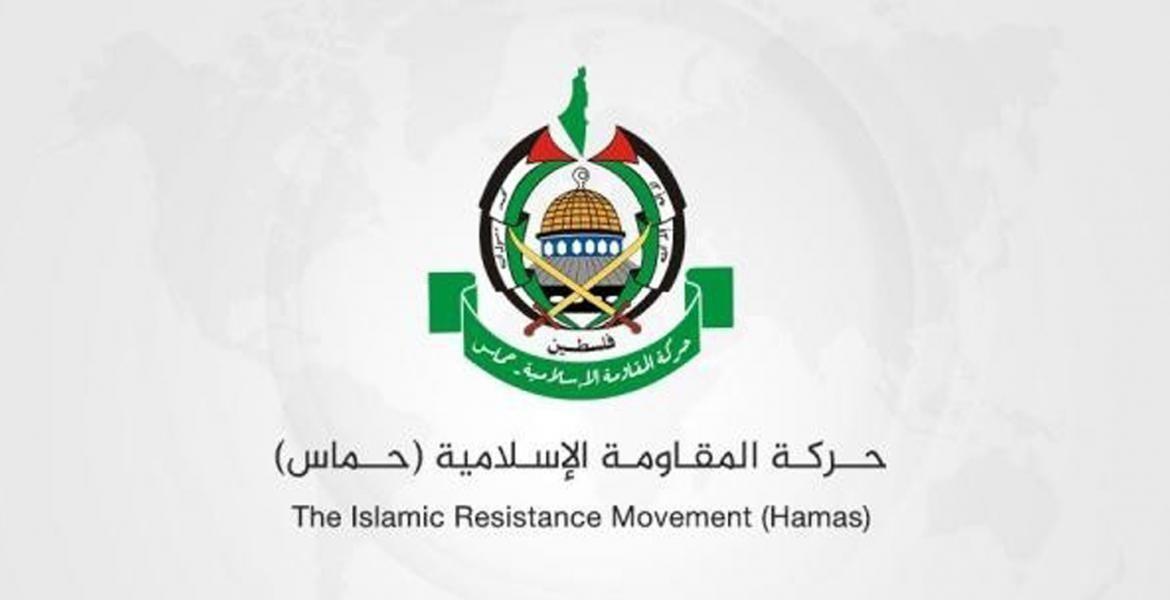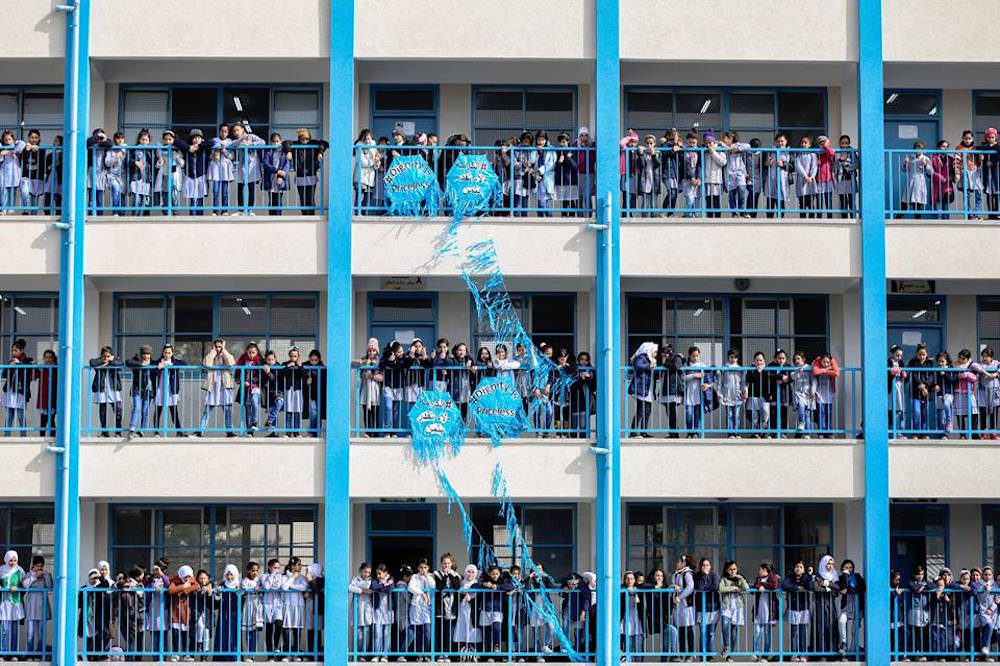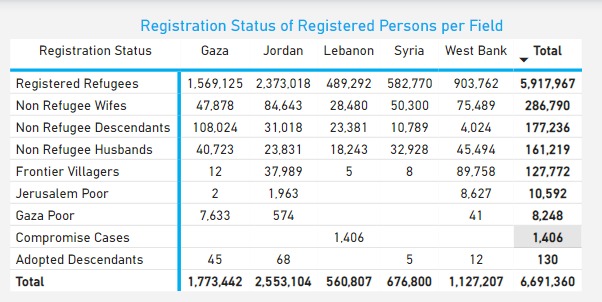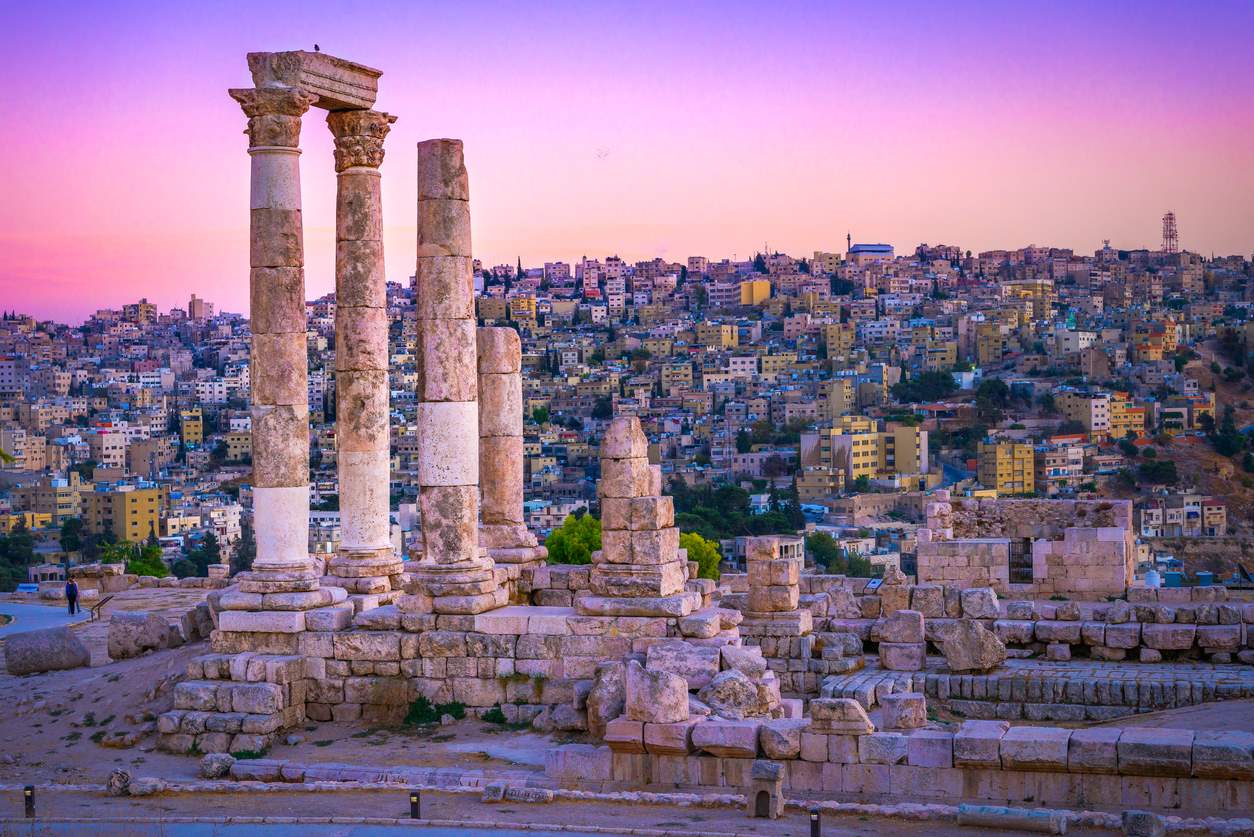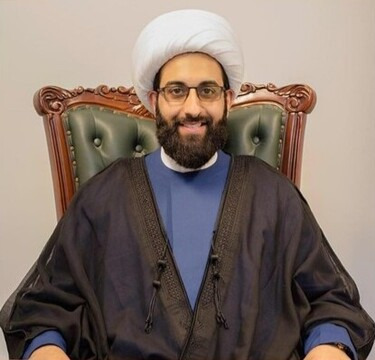A couple of years ago, I accompanied former Israeli Communication Minister Ayoob Kara and a group of foreign journalists on a trip to the war-torn Karabakh region, seven months after the conclusion of the Second Karabakh War, which ended in November 2020. Former Israeli Communications Minister Ayoob Kara described then what we witnessed there to be worse than anything he experienced in Lebanon in the 1980’s. As a veteran of Israel’s First Lebanon War, he knows what he is talking about.
Mile after mile, we drove zig-zag, as the roads were completely destroyed and surrounded by landmines. According to the Jerusalem Post, Armenia planted over 1.5 million landmines throughout Karabakh. Furthermore, in 2021, Azerbaijan’s President Ilham Aliyev stressed that only 25 percent of the landmine maps that Armenia has handed over to Azerbaijan are usable. Since the Second Karabakh War ended, 302 Azerbaijani civilians have fallen victim to mine explosions, 57 of whom died and 245 of whom were severely injured. As the British newspaper Express noted, “the Armenians used Russian made mines, but they made many copies of their own.”
Due to the massive volume of landmines planted in the war-torn Karabakh region, we passed by cars that did not survive the journey. Our own bus also broke down and we were stranded for hours in an area full of landmines. There, we witnessed a landscape full of uprooted trees, burnt agricultural fields, destroyed cultural heritage sites, desecrated holy places, ruined villages, towns and even cities, and rivers without fish, as pollution had killed all of them. In fact, some of the fires were still raging on as we drove by.
Back then, in the war-torn Karabakh region, there was no airport, no cafes, no restaurants, no grocery stores and no hotel except for a run-down one in Shusha, where the former Israeli Communication Minister and I were forced to camp out in without electricity. This is because the entire area was ethnically cleansed of Azerbaijanis in violation of four UN Security Council resolutions, thus forcing one million people to become internally displaced persons as 20 percent of their country’s territory was stolen from them.
While the Tom Lantos Human Rights Commission speaks of “safe-guarding the people of Nagorno-Karabakh,” it is pivotal to remember that Nagorno is a Russian word that was added to the name of the region by Soviet colonialists and Karabakh is a Turkish word, which means “black garden.” This means that the original native people of Karabakh are Azerbaijani Turks, whose rights to this land have been recognized by UN Security Council resolutions 822, 853, 874 and 884, which were unanimously adopted in 1993.
This means that the United States also recognizes Azerbaijan’s undisputable right to the war-torn Karabakh region under international law. In fact, Armenia illegally occupied this region of Azerbaijan for thirty years in defiance of the international community and engaged in illegal settler colonialism, where Armenian settlers literally lived among the ruins of what used to be Azerbaijani cities and towns.
Inspired by the Spanish Inquisition who placed pigs inside of historic synagogues, the Armenians decided to treat mosques in the war-torn Karabakh region in a similar manner. None of this should be considered surprising. After all, the Nazi war criminal Garegin Nzhdeh is considered a national hero in Armenia. As one Armenian man who worked for a nationalist organization proclaimed in Republic Square in Yerevan, “The swastika is the symbol of the Indo-European Aryan people. Gypsies were killed as a parasite nation. And Hitler killed Jews because they engaged in incitement. They have bloody money. No difference, Jews are very harmful. If rats live in your house, will it be good? Do you know that in 1915 the Armenian genocide was organized by Jews?”
Unfortunately, such prejudice against the other which compares Jews to rats and Gypsies to parasites remains widespread within Armenia. Thus, in the name of Nzhdehism, a fascist ideology that is taught in the Armenian school system and which runs the Armenian state today, all of the mosques in the region were either demolished, used as observation towers, defiled with pigs or transformed into Iranian mosques, with the indigenous Azerbaijani heritage getting completely obliterated. More than sixty mosques in the Karabakh region were entirely destroyed.
Unlike the Greeks, who after a massive fire in 1917 destroyed the historic sixteenth and seventeenth century Ottoman-era synagogues, decided to root the Jews out of Salonika by rebuilding the city as a Hellenized cosmopolitan center, the Armenians did not even bother to do that and built homes in Shusha among the headquarters of a destroyed Azerbaijani newspaper, a destroyed Azerbaijani government office, a destroyed Azerbaijani bank, and a palace belonging to Azerbaijani poet Khurshidbanu Natavan, while the native inhabitants were compelled to live in internally displaced persons camps far away from their historic homeland.
The Armenian settler colonialists literally lived among the ruins of the nation that they ethnically cleansed from the area. They did not even bother to rebuild Shusha in their image because they knew in their hearts that this was the cultural capital city of Azerbaijan, the homeland of countless Azerbaijani poets, musicians and patrons of the arts dating back centuries, and never really belonged to them, so they did not bother to plant proper roots there.
In 2022, I returned to Karabakh together with former Israeli Communication Minister Ayoob Kara. By then, the roads were much better, the five-star Karabakh Hotel and the Fizouli Airport were built, the food situation in Karabakh dramatically improved, and the greenery was beginning to be restored to the area. However, this was thanks to the heroic efforts performed by the Azerbaijani government to rebuild their homeland from nothing and had nothing to do with the Armenians.
If anything, the Armenians did everything in their power to sabotage reconstruction efforts, as over 2,700 anti-personnel mines produced in Armenia in 2021 were discovered in Azerbaijani territory. In fact, not only did Armenia refrain from handing over all of the landmine maps and continue to plant landmines, but they also attacked Azerbaijani soldiers, cooperated with Russia to illegally extract Azerbaijani resources in violation of international law, and committed other acts of sabotage, which complicated reconstruction efforts.
As a result, it will take at least thirty years to rebuild Karabakh, if not longer. In fact, the remnants of Armenia’s ethnic cleansing campaign remain to be seen in Karabakh to date. Together with Minister Kara, I went to the Ivarant Cemetery, which contained the graves of prominent members of the Karabakh Khanate, dating back to the 18th and 19th centuries. The graves were gone and the beautiful Turkic architecture of the royal tombs lay in ruins, completely run down from the Armenians utilizing these historic tombs as pig pens. They treated this site like this even though it was labeled as a world heritage site. According to a local guide, “The Armenians were taking stuff away from here and selling them to the Iranians.”
During his trip to Karabakh, Kara learned that for two hundred dollars, everything inside the homes of Aghdam, whether refrigerators, washing machines, family heirlooms or raw construction materials were torn from the homes and were sold to the Iranians, who were able to profit from the destruction of an entire city and the ethnic cleansing of the Karabakh region in the 1990’s. After they took everything, they burnt everything down, thus leaving many of the homes without roofs, as the roofs were made of wood. The Imarat Cemetery was not the only historic place that they desecrated. They also destroyed the historic Bread Museum, complete with a loaf of bread dating from the Second World War.
The consequences of this conflict are still experienced by the Azerbaijani people to date. Within the past month, I attended a UN conference in Aghdam, where I saw how Azerbaijani landmine victims were struggling to play soccer with amputated legs and arms. In the past, I also visited the Mazasir Refugee Camp, where I saw how Azerbaijani internally displaced persons (IDP’s) continue to live in horrific conditions due to the fact that Armenia destroyed their homes. Talib Mammadov, an IDP from the Aghdam region that I interviewed, stated: “In our family, there was a mother, father and three brothers. During the First Karabakh War, all four men in my family got injured. I also got injured in the war in the abdomen. After that, my life changed. Everything changed. My life became exceedingly difficult. I lost my homeland. Furthermore, I was incredibly sad that Aghdam became a ghost town without people. The tragic fate of Aghdam killed my mother.”
He told me: “Imagine what it is like to open your eyes and one day see that you did not have anything, and that you have to move to another region for God knows how long. The taste of food, the taste of water, everything is different. That is why my mother passed away in 1998, for it was exceedingly difficult for her.” However, the Armenians did not just ethnically cleanse Karabakh and the seven Azerbaijani districts of Azerbaijanis. They also massacred 613 innocent Azerbaijani men, women and children in one day in Khojaly for the crime of being Azerbaijani. Over 20 US states have passed resolutions condemning this genocide.
Yasemon Hasenova, a Khojaly Genocide survivor, related: “When I was 12 years old, I experienced the terrible days of the Khojaly genocide. I lost my father, the Azerbaijani national hero Huseynov Tofig, my mother, grandparents, uncle, aunts, and my aunt’s two kids. This genocide took away my childhood. I experienced a great tragedy. I could not reconcile with the loss of my relatives. What do you think it means to lose both parents, relatives and loved ones in one night? For 29 years, I do not know what parental love is.”
Raoul Conteras wrote in Murdered in the Mountains: War Crime in Khojaly and the Nagorno-Karabakh Conflict about the horrendous sexual torture endured by the survivors of the Khojaly Genocide, a narrative which is often neglected in the West. The testimony given by Durdana was particularly shocking: “She was bound to a chair and slapped and hit time after time. One of the soldiers lit cigarettes for his comrades and they took turns burning her legs with lighted cigarettes. They beat her with a metal stick, which was probably a pipe. When his arm tired, another soldier took the pipe and continued to beat her.” A soldier mashed his boot into her face and then she was gang raped in front of the other prisoners, until she passed out.
Azerbaijani women who endured such sexual torture are forced to live with such memories and they are never again the same. In Judaism, rape is considered to be equivalent to murder for precisely this reason as it literally slaughters the soul of the person.
Considering this history, one must emphasize that Azerbaijan did not blockade any corridor when they set up camp along the Lachin Corridor. They merely restored their territorial integrity in accordance with four UN Security Council resolutions in order to ensure that there will be a complete halt to the Armenians smuggling weapons, landmines and other items that sabotage the peace and to ensure that there is a rapid end to Armenians engaging in ecological terrorism, after the Azerbaijani environmental activists sought to protest until monitors are permitted to evaluate the ecological damage caused by Armenia’s and Russia’s illegal exploitation of Azerbaijan’s natural resources in violation of international law. The purpose of the protests was to raise awareness about Armenia’s environmental terrorism, Armenia’s violations of international law and the plight of the environment in the areas under the control of Russian Peace Keepers.
Azerbaijani journalist Orkhan Amashov noted, “We got evidence that Azerbaijan’s gold, copper and other natural resources are being exploited by the forces inside the Russian Peace Keeping Contingent. It is very clear that this is impunity and that something must be done about it.” Unfortunately, this commission is completely silent about that, even though the goal of the protests was not to cause a humanitarian crisis for local Armenian residents in the area. In fact, between December 12, 2022 and January 5, 2023, a total of 370 vehicles passed in both directions along the Lachin Corridor. Three hundred thirty of these vehicles belonged to the Russian Peace Keepers, 31 were ambulances from the International Red Cross and another three belonged to local Armenian residents. During this period, Russian Peace Keepers provided the local Armenian population with transports of food that included rice, canned meat, pasta, flour, potatoes, onion, chicken, vegetables, cabbage, sugar, coffee and other types of food.
It is a travesty of justice that a human rights commission named after Congressman Tom Lantos, a Holocaust survivor, would be supporting the aggressor in this conflict. As Professor Brenda Schaffer tweeted, “I met and briefed Congressman Tom Lantos many times. I doubt he would have supported a hearing on his name which shows blatant disregard for the territorial integrity of an ardent U.S. ally and ally of Israel.” It is a historic fact that Armenia is a proxy of the Islamic Republic of Iran. According to the Begin-Sadat Center for Strategic Studies, “Iranian munitions – the same ones now undergoing field testing in Ukraine – were actively used by the Armenian military during the previous round of fighting, and Iranian UAVs were used by Armenia in April 2023. Iranian emissaries are reported to have been seen in Karabakh, a separatist enclave populated by Armenians on Azerbaijani territory.”
Iran also opposes Azerbaijan regaining the Zangezur Corridor as stipulated in the Trilateral Agreement that ended the hostilities, as this would inhibit Iran’s ability to use Armenia to bypass Western sanctions. As a result, Iran is doing everything today to discourage Armenia from making peace with Azerbaijan, which has led to the mistaken impression in Yerevan that they can continue to refuse to sign a peace treaty and stay viable with the backing of Putin and the mullahs. The Armenians had good teachers when it came to learning obstinacy.
According to the political scientist Michael Gunter, “the ASALA (Armenian Secret Army for the Liberation of Armenia) terrorists who seized the Turkish Consulate in Paris in September 1981 told the police they were trained in Palestinian camps. Evidence exists that extremist Palestinian factions collaborated with ASALA in its bloody attack on the Ankara Airport in August 1982. After its forces overran the PLO (Palestinian Liberation Organization) strongholds in Lebanon during the summer of 1982, Israel reported that captured PLO documents confirmed the ASALA-PLO connection.” Unfortunately, when the US Congress hosts events like this, they help encourage Armenian obstinacy regarding signing a peace treaty and assist Iran in using Armenia to bypass Western-imposed sanctions.
Azerbaijan has noted many times that they are willing to peacefully coexist beside Armenians. The Azerbaijanis are more than willing to grant ethnic Armenians living in Karabakh equal rights as Azerbaijani citizens. Even though Armenia has caused Azerbaijan so much suffering, they are still waving an olive branch because they dream of a brighter future for both peoples. While the Armenians have systematically destroyed mosques in the war-torn Karabakh region, an Armenian church is still standing unmolested in the middle of Baku. Furthermore, as the Azerbaijanis rebuild Karabakh, they not only plan on rebuilding the mosques in the region but also the churches. This is because Azerbaijan pursues a multi-culturalism policy, where the followers of every faith and religion receive an equal amount of respect and support. In fact, it is normal in Azerbaijan for everyone to celebrate Easter, Novruz and Passover in unison, with the members of each faith greeting each other on their respective holidays.
While many Jews in America are afraid to wear a Star of David necklace due to anti-Semitism, the two synagogues in Oghuz remain unlocked year-round with zero security, as anti-Semitism is alien to the Azerbaijani culture and way of life. Thus, instead of this commission worrying about the plight of Armenian settler colonialists, they should focus on trying to encourage Armenia to sign a peace treaty with its neighbors, and to stop being a proxy of Iran and a stooge for Russian President Vladimir Putin, who to date uses his presence in the region in order to sabotage American and European interests in the area.
The famous Holocaust scholar Elie Wiesel once stated, “There may be times when we are powerless to prevent injustice, but there must never be a time when we fail to protest.” As an American citizen who was born down the street from the White House, I am utterly dismayed that the Tom Lantos Human Rights Commission is desecrating the memory of a Holocaust survivor who served in the US Congress by using their name to host a panel on federal government property in honor of a proxy of the Islamic Republic of Iran, who is allied with the Palestinian national movement against the Jewish people and seeks to harm one of Israel’s closest allies in the Islamic world.
Rachel Avraham is the CEO of the Dona Gracia Center for Diplomacy and an Israel-based journalist, who has published in the Hill, the Washington Times, I24, the Jerusalem Post, Israel Hayom, the Daily Wire, JNS and many other publications.
She has an MA in Middle Eastern Studies from Ben-Gurion University of the Negev and a BA in government and politics with minors in Jewish Studies and Middle Eastern Studies from the University of Maryland at College Park. She also has a certificate in Peace Studies and Regional Security from Ben-Gurion University of the Negev.
Avraham was born in Washington, DC and grew up in Rockville, Maryland, but has been living in Israel since 2009. She is the author of “Women and Jihad: Debating Palestinian Female Suicide Bombings in the American, Israeli and Arab Media,” which was published by the prestigious Gefen Publishing House. She also wrote “Ayoob Kara: The Man Behind the Abraham Accords,” which is in the process of getting published.





